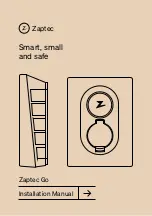
20
5.6
User Considerations
5.6.1 Critical RF Exposure Installation Requirements
WARNING:
DURING CHARGING THERE WILL ELECTRIC AND MAGNETIC FIELDS BETWEEN
However, it is still necessary to take precautions to work safely with the charger.
The installer of the system must provide adequate training to all operators and place warning signs /
warning lights / restrictions accordingly. A physical restriction must be in place to prevent operators
or by-standers from coming closer than 20 cm to the pads of wireless charger during operational
charging. This barrier may be met by the physical characteristics of the placement of the wireless
charger in the application, for example if the WSP can be kept ≥ 20 cm from the edges of the vehicle,
as this would mean there is no possibility of a user physically being able to be within 20cm of the pads
during charging.
It is recommended a 15’’ / 38 cm keep-out zone be marked around the WPP with accompanying
warning signs saying not to enter the zone. This will result in any human near the charging area being
warned to keep a safe distance from the WPP.
The recommend keep-out areas for three installation scenarios are described as follows :
• EN 62311:2008
• FCC 47 CFR part 2.1091
• ISED RSS-102 Issue 5
• Users must be > 20 cm away from the pads.
• Operators (if any) must be informed that they could be exposed to EMF, and that they
must keep enough distance from the WPP at all times, including when not charging.
• Users with medical devices, such as metallic prostheses, cardiac pacemakers, implanted
defibrillators, and cochlear implants, must stay at least 1 m away from the pads.
THE PADS. DURING OPERATION, HUMAN BODIES MUST BE KEPT A DISTANCE OF ≥ 20 cm
FROM THE PADS. PLEASE NOTE AND FOLLOW THE OPERATION AND INSTALLATION
INSTRUCTIONS IN SECTION 3.3 BELOW. IT IS THE RESPONSIBILTY OF THE INSTALLER TO
PROVIDE SUFFICIENT WARNINGS, KEEPOUT RESTRICTIONS AND TRAINING TO ALL
PERSONNEL.
Active charging will generate electric and magnetic fields between the pads. The charger has been
designed to minimise stray fields and has been tested as complying with the following standards:
















































